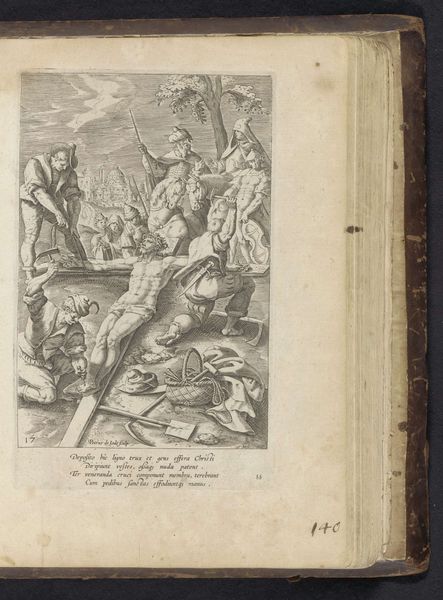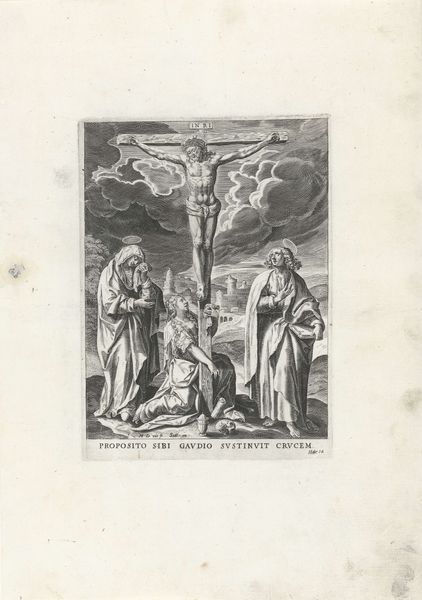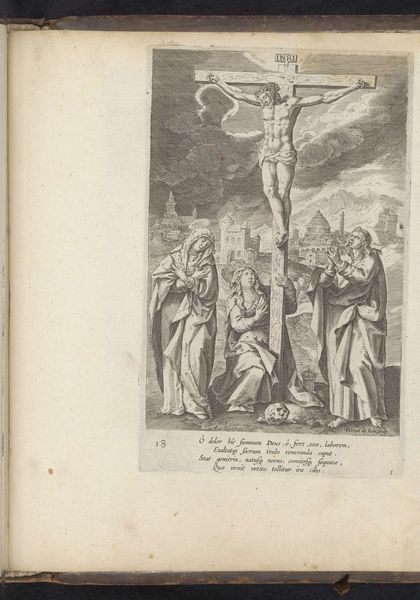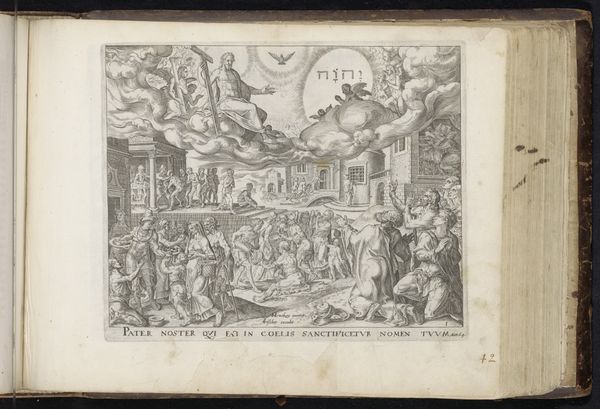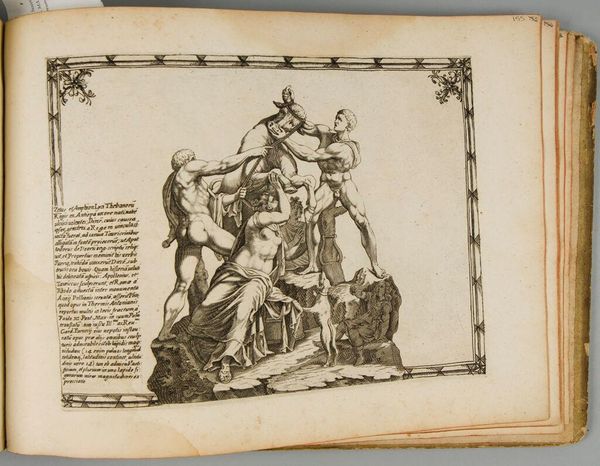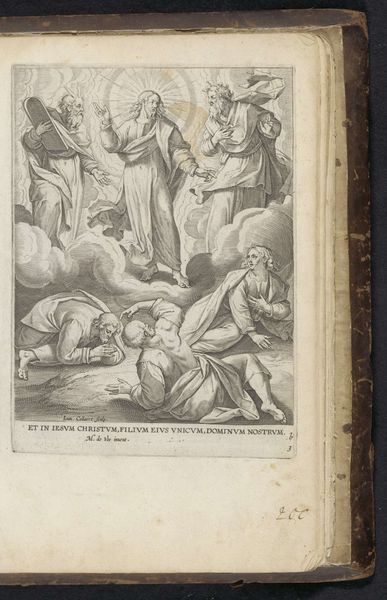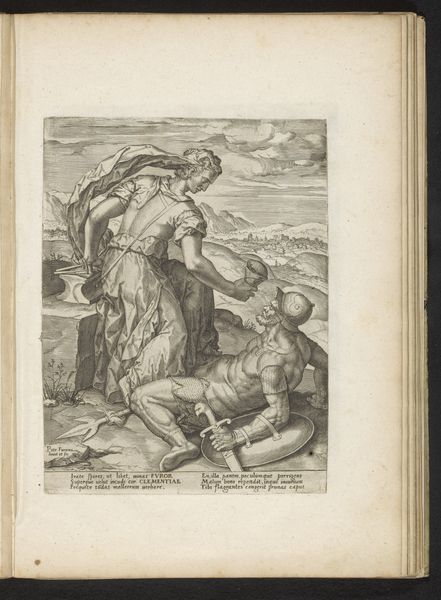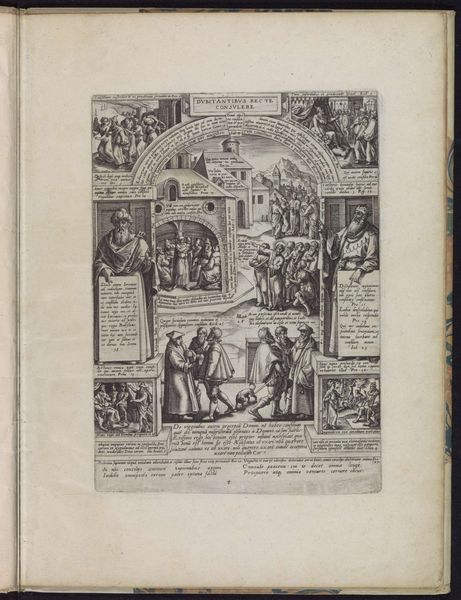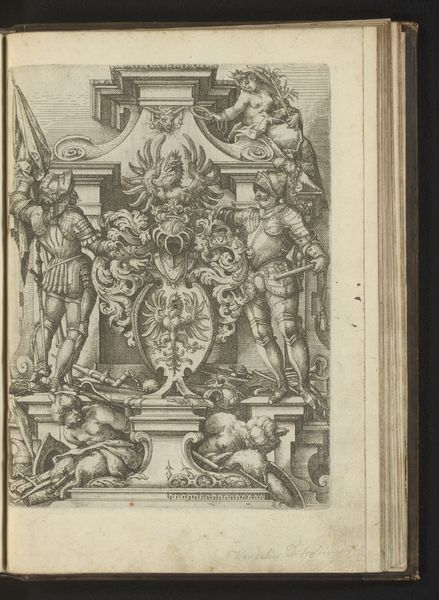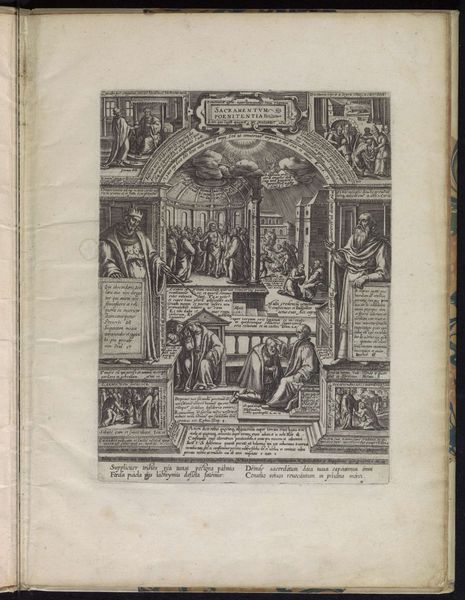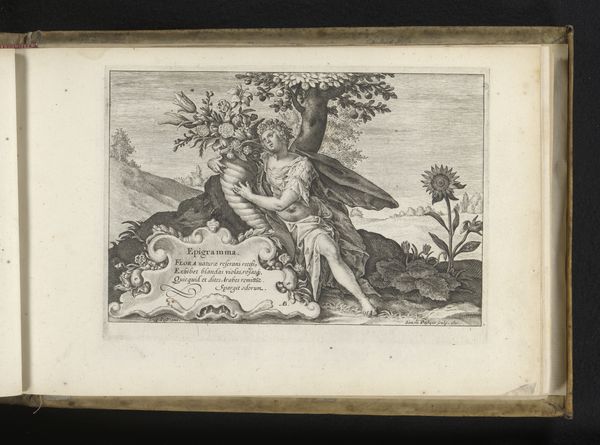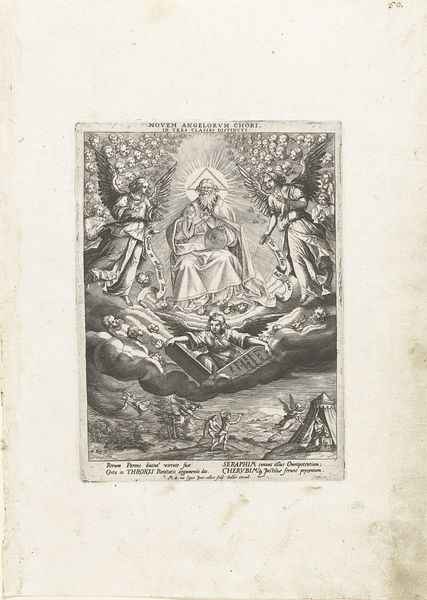
print, engraving
#
baroque
# print
#
figuration
#
coloured pencil
#
history-painting
#
engraving
Dimensions: height 190 mm, width 139 mm
Copyright: Rijks Museum: Open Domain
Curator: Before us is an engraving titled "Kruisiging en graflegging," or "Crucifixion and Burial," attributed to Jan (II) Collaert, created sometime between 1570 and 1646. Editor: The stark contrasts immediately draw the eye, emphasizing the solemnity of the scene. The elongated figures and swirling lines lend a baroque sensibility. Curator: Indeed. Collaert uses line and form to guide our perception of this historical and religious moment. Notice how the central placement of Christ's figure emphasizes its divine symbolism, drawing the eye upward. It's positioned directly over a skull and a kneeling mourner. Editor: That's quite heavy handed. But these are also crucial iconographic details, the skull being a memento mori, a reminder of mortality, underscoring the themes of sacrifice and redemption. The kneeling woman at the base – perhaps Mary Magdalene – adds emotional weight, connecting the divine suffering with human grief. Her posture, in its dynamic diagonals, also accentuates her movement towards a catharsis and awareness of impending death. Curator: Agreed. Also note the precise rendering of textures: the rough wood of the cross juxtaposed with the delicate fabric of Mary's robes. Each element has distinct patterns, textures, and shapes that work together harmoniously within the frame. It demonstrates a real skill. Editor: Those finer details add a layer of psychological depth. The background landscape, usually a tranquil symbol of creation and divinity, mirrors a tumultuous sky with chaotic striations that create a very unsettled, pained landscape mirroring what may be in the mourning soul. The artist doesn't separate the divine suffering from a suffering earth. It brings everything together. Curator: I am compelled to agree. Collaert successfully melds structural elegance with emotional resonance, a difficult thing to do effectively, really. Editor: It’s clear that in bringing both aspects together—visual mastery with iconographic awareness—that Collaert offers viewers not only an object of aesthetic interest but a profound meditation on faith, life, and death.
Comments
No comments
Be the first to comment and join the conversation on the ultimate creative platform.
